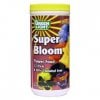You are right, the peat moss pots came right on out however, the plants are now 2-feet tall and I was wondering if it is okay to transplant during flowering with minimal harm to the plant since those little pots still do not seem sufficient.
Your leaf curl might be a pH problem caused by having used peat moss pots. Not all peat moss pots are alike.
pH is of course a measure of the acidity or alkalinity of a substance. The pH of different types of peat range from a very acid 3.6 to slightly alkaline 7.5. Two terms are used to describe the pH of peat. Low lime peats have a pH value below 5.0. These peats are usually calcium deficient. High lime peats have a pH above 5.0 and are usually calcium sufficient.
Depending on what type of peat your peat moss pots were made of your plants might have been living in conditions of a major pH imbalance.
When it comes to repotting I do not like to do it once in flower but at times you have to. The best thing is to plan correctly and plan ahead so you do not have to repot while in flower.
If you need to repot, regardless of being in flower or not, here are a few helpful tips. If dealing with tiny/small peat moss pots that can be cut/pealed/pulled away from the root-ball in bits if needed the tips will not apply. For other repotting they are handy to know. It basically begins when one first begins to plan a grow but still it will cover other part and situations during a grow that involve repotting.
For future reference .. when you repot follow the following steps.
 
Select the pot size you will be transplanting into. (I suggest growing in nothing smaller than 5-gallon pots, though in some cases I will say a 4-gallon pot will work .... in some cases.) and I normally use 7-gallon pots and I start out my plants in them and never repot.)
 
Allow the soil in the pot(s) your plant(s) is/are in to dry out and slightly pull away from the sides of the pot.
 
(The following applies if you are right handed. If not reverse the hand position/use instructions)
 
Partially fill your new larger pot with quality soil so when you insert your plant into the new pot and fill in around the rootball the top of the soil will be at the correct/current level.
 
Pick up your old pot with your left hand.
 
Place your right hand on top of the soil with the main stem between your first and second fingers.
 
Gently tap the edge of the pot on a countertop or a workbench or something similar. The entire rootball should slide out in one piece, possibly with a slight amount of soil loss, but no damage to or loss of roots unless the plant was so root-bound that the roots had grown through the drain holes. If that is the case clip them first or cut the pots opening them up enough for the roots to easily pull through without damage.
 
You plant and rootball are then securely held in your right hand. Inspect the rootball and if it is tightly packed/twisted/root-bound slightly score/cut the edges of the rootball and also slightly score/cut the bottom of the rootball. If you do not score the rootsball the roots will want to continue to follow their circling pattern and their growth progression both down and to the sides into the fresh wider and deeper soil will be much slower. Each cut root will push out new roots and they will go both out and down into the new soil.
 
Place the plant into the new pot.
 
If the surface level of the old rootball is to low or two high remove some soil or add additional soil.
 
Next fill in around the edges between the rootball and the sides of the larger pot.
 
Water thoroughly to cause the soil to settle without compressing it too much by packing it down by hand. If needed add additional soil and water again.
 
Normally plants will undergo very little to no shock when transplanted in this manner but it would not be an injudicious thing to do to use a product like SuperThrive or something with the same general properties because they will reduce plant stress helping them to overcome it quicker and easier. Skip the SuperThrive part if transplanting/repotting while in flower. SuperThrive makes flowers last longer by slowing down the entire flowering process. If given SuperThrive while in flower it will lengthen the total flowering time because it will slow down bud/flower growth/progress in the plants just as it will in ornamental plants.
 
Good luck!






 [URL=http://i921.photobucket.com/albums/ad60/eyerguy/cd09c210d1d608249b96917fcd3ff411.jpg]
[URL=http://i921.photobucket.com/albums/ad60/eyerguy/cd09c210d1d608249b96917fcd3ff411.jpg]
